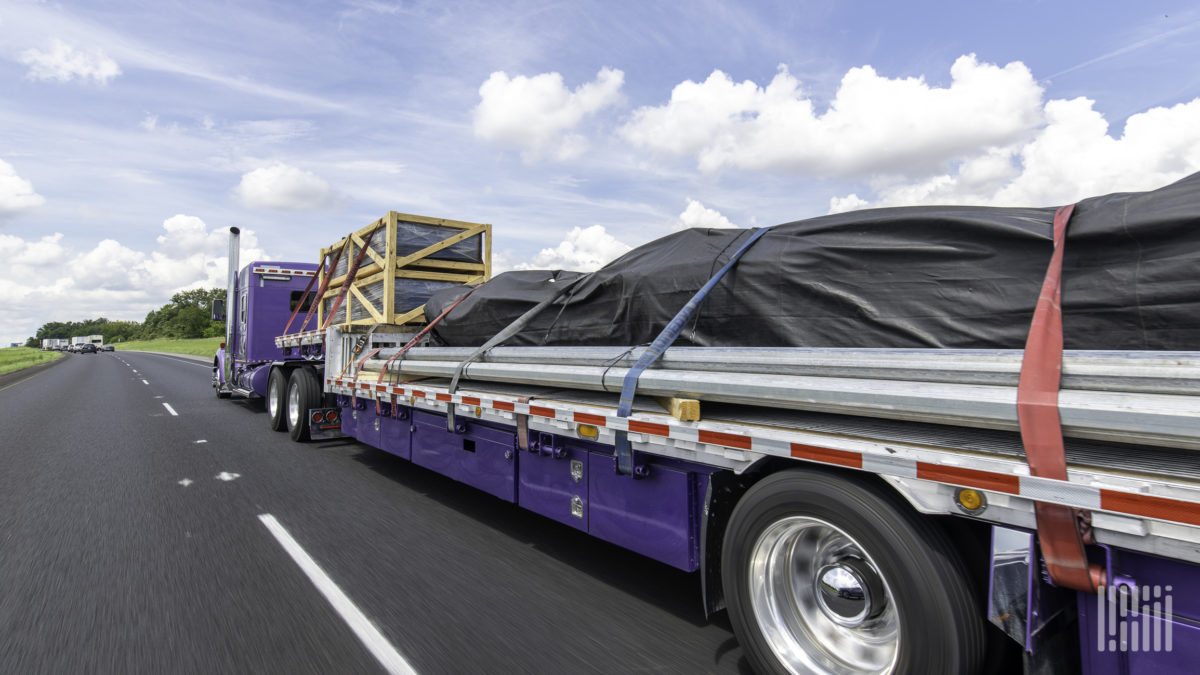Severe weather, rough and steep roads, and congestion are just a few of the countless factors that can contribute to cargo becoming dislodged or shifting mid transit. Proper cargo securement is a must to protect freight, prevent claims and most importantly, keep drivers and the public safe.
While not all cargo securement violations are out-of-service violations, cargo securement violations were the fourth most common type of violation during the Commercial Vehicle Safety Alliance’s (CVSA’s) 2023 International Roadcheck, a three-day enforcement effort in May.
Improper cargo securement can result in out-of-service violations and fines. Further, unsecured cargo can fall onto the road, causing significant risk of injury or even death to motorists.
Daniel Vega, director of safety at Reliance Partners and former inspector for the Commercial Vehicle Enforcement Bureau, found during his time as a state trooper that cargo securement was a prevalent issue. One of the most common violations he noticed was a lack of tie-downs appropriate for the cargo’s length and weight, as well as not having an extra tie-down if the trailer didn’t have a header board.
Cargo securement issues are more noticeable on flatbed operations, but they can occur on other types of trailers when items aren’t loaded properly and secured with necessary measures like shoring bars and dunnage. Freight can shift around and cause issues for drivers upon opening the trailer.
Another cargo securement violation Vega noted was drivers’ failure to secure their spare tire.
“You’d be surprised how many tires you’d see on the side of the road on an interstate,” he added.
Vega advises carriers and drivers to take the following measures to avoid common cargo securement violations and keep drivers and roadways safe:
1. Provide drivers with more in-depth cargo securement training. Carriers should thoroughly train drivers on cargo securement expectations, especially for flatbed operations, beginning at orientation and ongoing during employment. Managers should set clear expectations of company policies and procedures and reiterate Federal Motor Carrier Safety Administration regulations.
2. Check securement during pre-trip inspection. Drivers are the main individuals interacting with a vehicle each day, so their pre-trip inspections are vital to catch vehicle maintenance issues before they become a safety problem or violation. Drivers should double-check that freight is properly tied down in accordance with each load’s requirements.
3. Complete en-route inspections. Intermittent checks of equipment during a trip are necessary to ensure that all tarps, tie-downs and other equipment are secure. According to 49 CFR 392.9, checks must be completed within the first 50 miles. Drivers must also check their cargo at whichever of the following occurs first:
- A duty status change,
- After three hours of driving, or
- After 150 miles or more of driving.
4. Check securement post-trip. After a trip is complete, drivers should double-check the integrity of tie-downs and tarps and replace them before the next trip.
5. Don’t be afraid to add more tie-downs. “If you’re ever in doubt if you should add an extra tie-down, the answer is ‘yes,’” said Vega. There is always a minimum number of tie-downs needed. If a load is only secured with the minimum number of tie-downs and, for some reason, one of them becomes loose or is in poor condition at the time of inspection, it could lead to being placed out of service.
Click here to learn more about Reliance Partners, a trucking insurance agency helping businesses on their safety compliance journeys.












